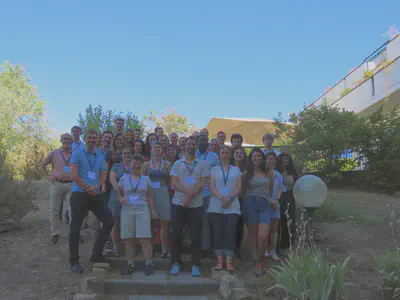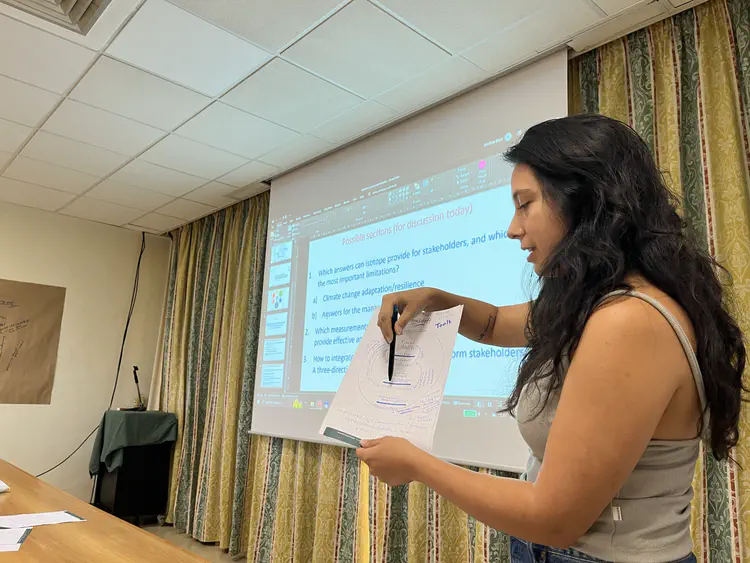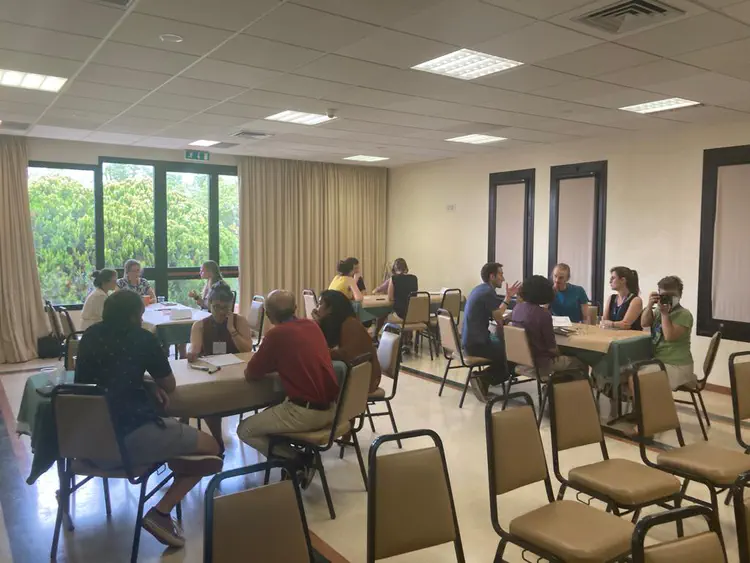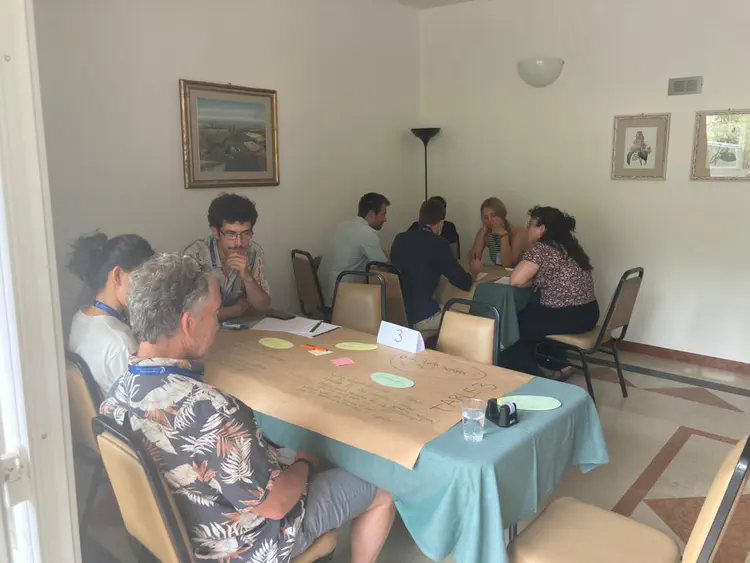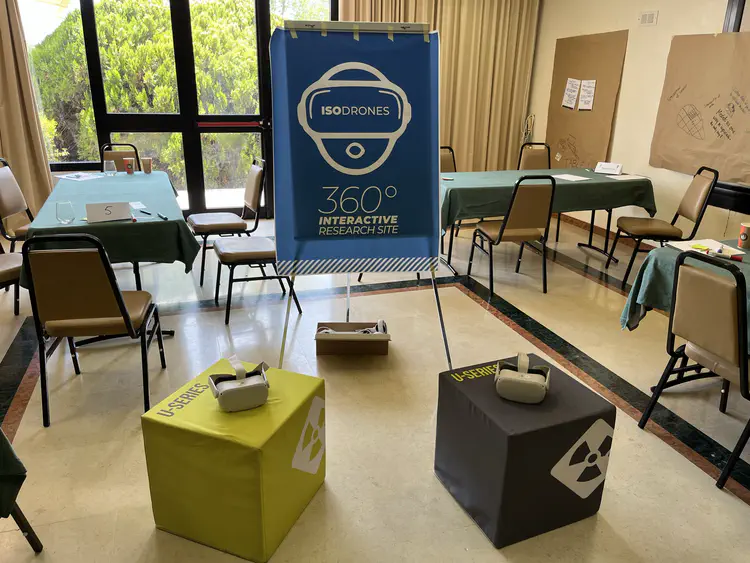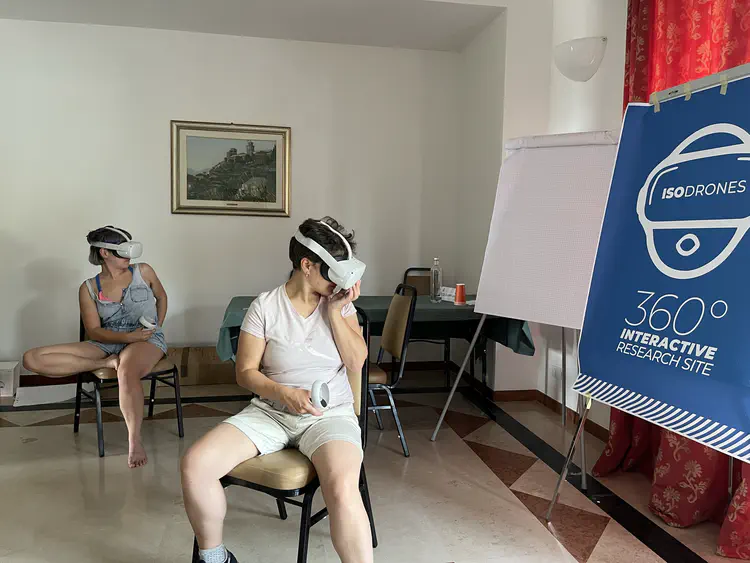2nd Workshop of Water Partitioning in Forested and Agricultural Catchments: Three awesome days with the community, great vibes and scientific outrage
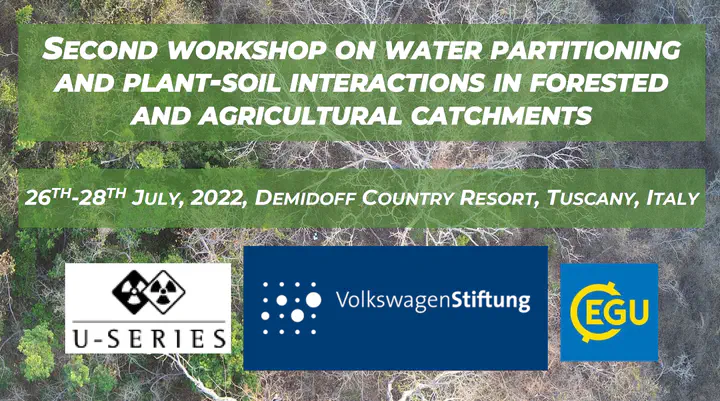
It’s been two weeks now since the workshop, and after taking some time to recover, it’s time to reflect a bit. What a great time we had in Pratolino, Tuscany! For the ones who have not been: The second workshop on water partitioning is an international workshop for researchers interested in soil-plant-atmosphere interactions and isotope methods to study them. We gathered 43 people from many different nationalities and career levels in order to present and discuss our research, find new directions of our research efforts and identify challenges that we want to address in the next years. The format is somewhat different from classic conferences, as we had a mix of talks (solid research results), sparks (work-in-process and ideas) and – to a large degree – discussions.
First off: We are sincerely grateful for all the positive feedback we received during and after the workshop – it was an intense but it feels like it was a very beneficial experience for all participants! As the chief organizer, I am very happy and also relieved to a certain degree that everything went THAT well! This was the first international conference I organized and I would be lying to say I was not nervous. Once again, a big thanks to the organizers: Francesca Scandellari, Daniele Penna, Josie Geris, Luisa Hopp and Matthias Sprenger. We were able to work together very well and I think everyone brought a little piece of uniqueness to this workshop!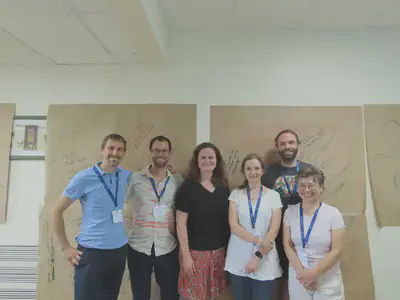
A special thanks goes to Josie, who volunteered for leading the World Café Discussion Sessions – a key element of the workshop. In brief, the World Café is an alternative and intensive format of group discussion – an explanation on the concept can be found in a video here and as read here. We had 4 World Café Sessions during the workshop – each took two hours and the topics to be discussed was provided by the organizers (3x) and the attendants (1x). We wanted to use this format in a way that we will not end up with simply identifying research needs and point out weaknesses. Rather, our aim was to provide solutions, or at least identify ways to solve the identified challenges. In order to do so, we first came up with sort of a hypothesis:
The water isotope research community is currently not well connected to practitioners, such as forest managers, public authorities and farmers.
All World Café Sessions were surrounding this topic and as an outcome, our goal is to provide an ‘isotope toolkit’ – a collection of applied and practical questions that can be solved using our favorite method – in order to remedy the situation and communicate the toolkit to practitioners. This should also include details on what else needs to be measured and who can provide these measurements. You can read in the upcoming months what the workshop participants made out of it 😉
Here are my key takeaways from the workshop as short summary:
- The atmosphere defines a conference/workshop: With the number of participants we had, we were able to create a ‘family’ atmosphere, where nobody was shy of discussing and raising critical points. It is especially important for Early Career Scientists to lose this fear – we have been quite successful with that, I believe.
- There is a great mentality for open research! Stefan Seeger, Concetta D’Amato, Fabian Bernhard, etc. – the young scientist showed up with such a great sharing and open science mentality! They took Jack Johnson’s advice serious! Providing something that you have been working on for months and years is a great gesture (obviously, it is also beneficial for the provider) and cannot be taken as granted!
- Both plot scale and larger scale approaches for ET partitioning were presented, and it was great to see both worlds. The catchment people have found some really powerful approaches (Kirchner, Floriancic, Sprenger, etc.) for quantifying and separating fluxes on the larger scale, while on the smaller scale there is still a lot to solve methodologically (which water do we measure and which water pools should we measure?) and process-related. Adria Barbeta’s presentation really gave a hint on how we should extract plant water samples properly!
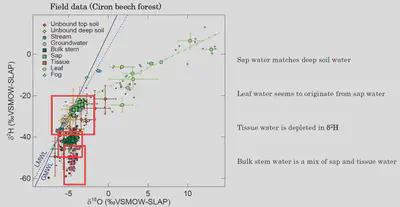
- It was great to see so many presentations of groups using in situ and vapor equilibration methods! Related to Adria Barbeta’s work, the most likely pool we measure in plants using in situ/vapor equilibration methods is the sap/mobile water! Dang!!! How cool is that!
- Modelers and field people can find together! But they need to find a common language. They need to speak and plan together, rather than throwing a sentence in their respective proposals (‘…and we will also model this’). Field researchers need to define their goals for modeling beforehand, and modelers need to communicate their minimum data requirements. It is also important to find a commonly accepted and flexible model instead of having custom-made one-purpose models.
- John D. Marshall once again proved how good of a presenter he is! Few slides and words, ‘shitty’ (i.e. simple) graphs – it’s the story you are telling and how you tell it is what matters! The ECS as well as experienced scientists can only learn from his way of presenting!
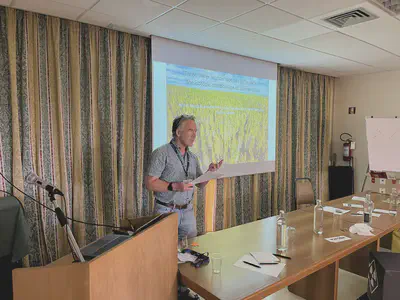
- Mental health is a big topic for young but also experienced scientists! Though our daily meditation group during the workshop was rather small, I was surprised that several participants approached me directly during the workshop wanting to speak about this topic. Also, it was soo cool to have experienced scientists like Pilar Llorens or Luisa Hopp joining the meditation sessions! When I asked the question ‘Who of you is nervous?’ on the pre-conference evening, Pilar was the first to raise her hand! =) This was one of my favorite moments – admitting what many would judge weakness – in front of everybody is such a sign of strength and signal to the younger ones: Nothing wrong with being nervous and anxious!!!
- The ‘360° Interactive Research Site’ rocked the house, despite some initial technical issues and is an awesome and innovative way to communicate science. Thank you for all the positive feedback and to c-Studios and filmflow for the realization - we do believe that there is great potential for both research and science communication projects in the future!
